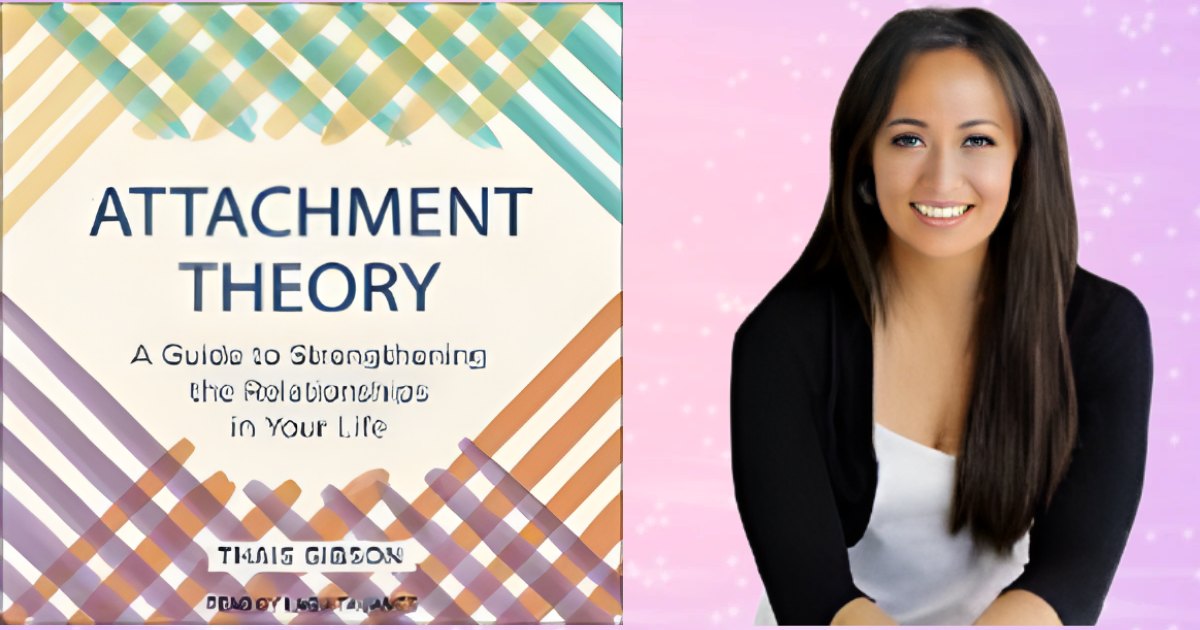Have you ever been curious about why some relationships feel effortless while others take more work? Or why some of us tend to be more clingy in relationships than others? If so, Integrated Attachment Theory Thais Gibson (IAT) may be a concept you’d like to explore.
Developed by Thais Gibson and now used by therapists and coaches, IAT has become the cornerstone for understanding our relationship patterns. This idea, rooted in attachment theory, helps people gain awareness of how they form attachments with people in all kinds of relationships from spouses and children to friends and colleagues.
This article will dive into the concept with Thais Gibson as your guide. We’ll cover what IAT is, what it looks like in practice, opportunities for growth, and more. By the end of this piece, you’ll have a better understanding of the principles at play when it comes to forming and sustaining healthy relationships. Let’s get started!
Table of Contents
What Is Integrated Attachment Theory With Thais Gibson?
Integrated Attachment Theory Thais Gibson is a therapeutic approach that incorporates the best practices from the fields of psychology, yoga, meditation, and somatic work. It’s a holistic approach that focuses on creating secure attachment foundations in relationships, both with self and others.
The theory draws upon depth psychology, interpersonal neurobiology, trauma resolution approaches, yoga philosophy, and somatic psychotherapy to help people develop healthier connections on a physical and emotional level.
At its core, Integrated Attachment Theory offers an understanding of how we relate to ourselves and others through an interconnected web of body mind heart spirit. It acknowledges the impact of one’s past experiences on their current behavior while also allowing those experiences to be presented in nonlinear ways freeing the individual to access multiple levels of awareness around their attachment dynamics and relationship challenges.
Overview of Attachment Theory:
Integrated attachment theory is a framework for understanding relational health across the lifespan. It’s based on research conducted by Thais Gibson and her colleagues that integrates both attachment theory with neuroscience and other psychological theories.
The main idea behind integrated attachment theory is that an individual’s relational and emotional health are influenced by the amount of connection and interaction they experience in early childhood. Each person’s individual experiences manifest as unique patterns of behavior that impact how they interact and respond to others, especially in relationships.
Attachment theory identifies four distinct types of attachment, based on how caregivers respond to a child’s physical and emotional needs: secure, anxious-preoccupied, dismissive-avoidant, and disorganized-disoriented. Each type has its own set of beliefs about self-worth, trustworthiness, and safety in relationships that shape how they approach new experiences in life.
Understanding these patterns can be a powerful tool for better managing your own emotions and interactions with people in your daily life. It can also be helpful for therapists to assess an individual’s relational health by identifying the signs of attachment styles that may be showing up in their current behavior. With this understanding of integrated attachment theory, you can dive into improving your connections with those around you!
Key Components of Integrated Attachment Theory:
Integrated Attachment Theory is a powerful tool for understanding the formation of relationships between people. Developed by psychoanalyst Thais Gibson, it helps to explain why we form strong attachments and how these attachments impact our lives.
The four key components of this theory are:
- Differentiation – Being able to understand our own needs and desires separate from those of the people around us.
- Interdependence – The ability to recognize that others, beyond ourselves, play an integral role in achieving our goals.
- Intimacy – Having a genuine connection with another person that is based upon a mutual understanding and respect for each other’s needs and desires.
- Balance – Having an equal relationship in which all aspects of life (such as emotions, work, finances, etc.) are managed according to each partner’s abilities and needs.
Integrated attachment theory can be used as a framework for creating more meaningful connections with others and developing healthier relationships overall.
Therapeutic Implications of Integrated Attachments Theory:
Integrated attachment theory, offered by Thais Gibson, offers an effective model of psychotherapy which has the potential to bring about positive change in those individuals it is applied to.
In psychotherapy, this theory can be used to:
- Give an understanding of the role of attachment in the development and functioning of an individual’s life.
- Help individuals identify and understand various defense mechanisms they have adopted over time.
- Facilitate a process of healing from destructive patterns created from concerning past events.
- Create a stronger sense of coherence and agency within the person’s self.
- Support patient’s in finding their inner strength and self-agency to move toward healthier relationships with themselves and others.
The reach of integrated attachment theory does not end there, for it incorporates research from evolutionary biology, psychoanalysis, philosophy, clinical psychology, social work, couple therapy, family therapy and beyond. Ultimately this creates an enhanced platform for providing well rounded therapeutic interventions that address the core issue instead of just surface level symptoms.
Applications Outside of Therapy:
Integrated attachment theory doesn’t just have its uses in therapy. It can also be incorporated into everyday life for more meaningful relationships.
One way to use this theory is to think about how it applies to friendships. When you’re trying to build lasting connections with friends, look for ways to create a secure attachment based on mutual trust and support. This can also help you avoid potential toxic relationships and give yourself the space to maintain healthy boundaries when needed.
Integrated attachment theory can also be applied at work. Looking at how connections with your coworkers fit into a secure-base framework will help you feel connected to the team while maintaining the professional distance that is necessary in the workplace. Being able to form trusted connections with your colleagues will make them more likely to approach you with questions or ideas and make team collaboration easier.
Finally, applying integrated attachment theory at home can help enrich your family life. You can foster connection and a sense of safety in your family by creating an environment that promotes physical and emotional security, as well as allowing each family member the freedom to express themselves authentically without judgment or criticism.
Taking these steps can help create an atmosphere of trust and love in which everyone feels understood, heard, and respected the foundation for any healthy family relationship.
Conclusion:
After diving into Integrated Attachment Theory with renowned author Thais Gibson, we can see that it can help us better understand our relationships and our place in the world. It emphasizes four important traits of attachment such as security, adaptability, emotionality, and capacity for intimacy.
By engaging in self-observation and reflective practices, we can develop better understanding of our attachment and how we interact with the world. As Thais put it, “the self-awareness cultivated from integrated attachment theory creates a more vibrant life with more meaningful connections.”
Integrated Attachment Theory is a valuable and powerful tool for understanding ourselves and our world. By practicing self-awareness, we can evolve and thrive in our relationships, relationships that are rooted in understanding and connection.
Visit for More Best Articles


